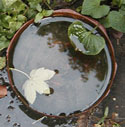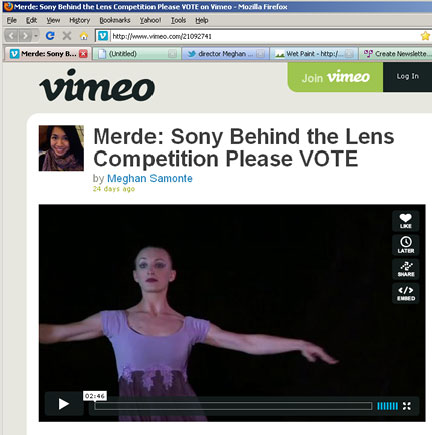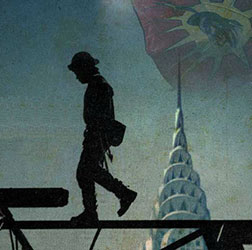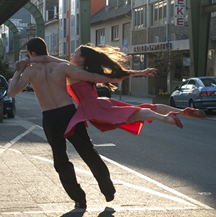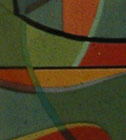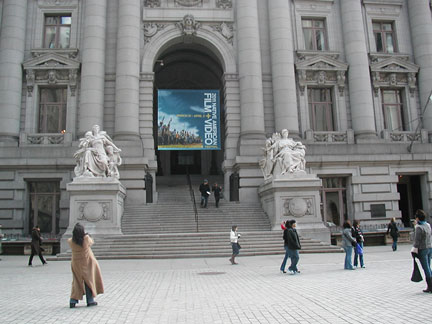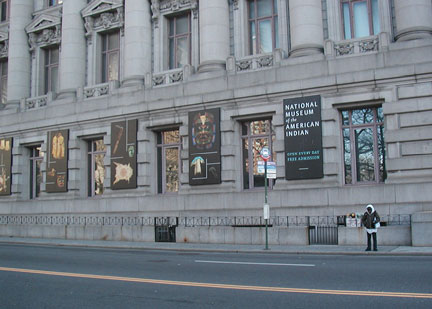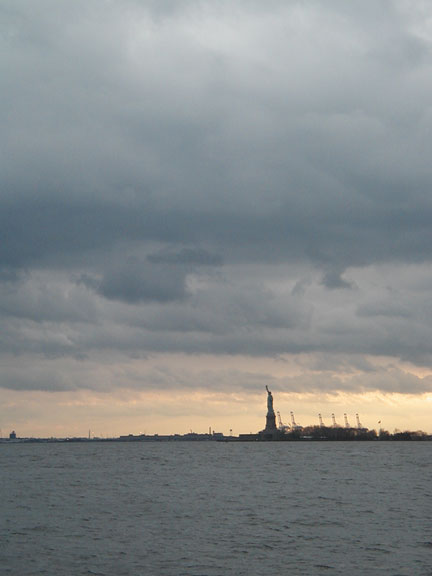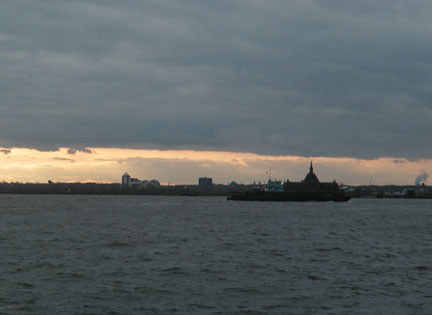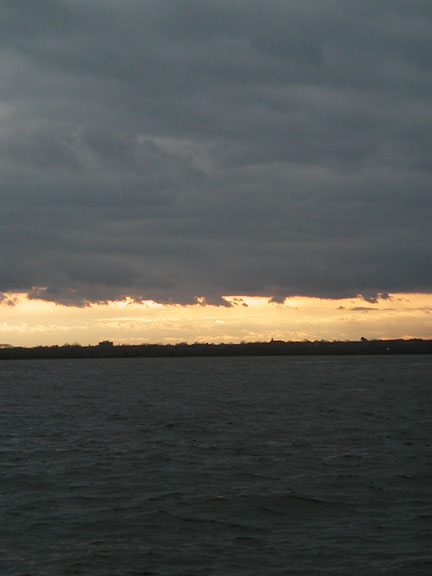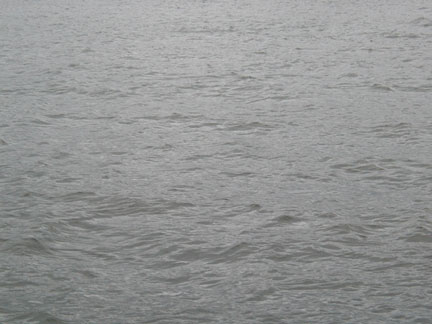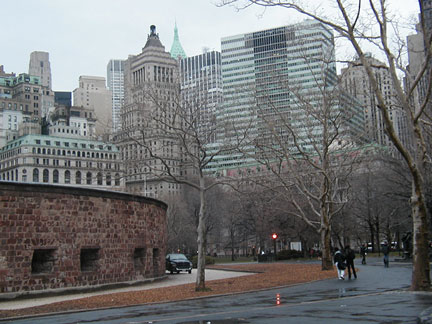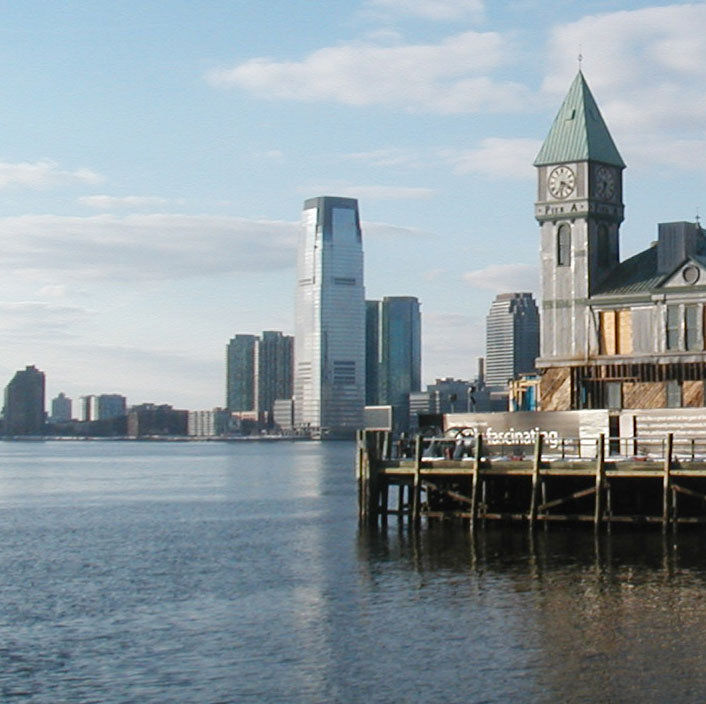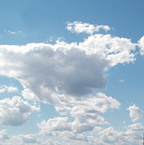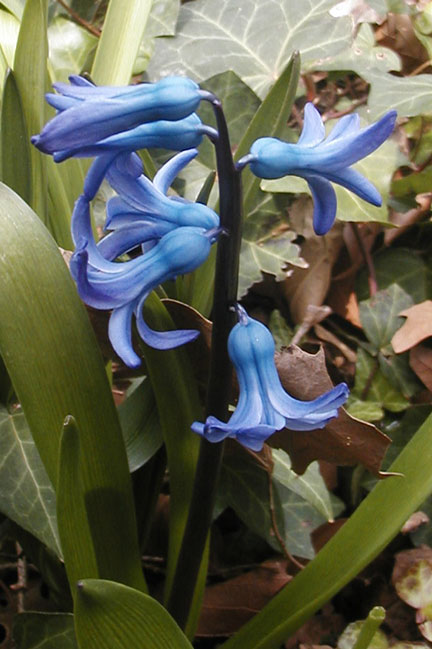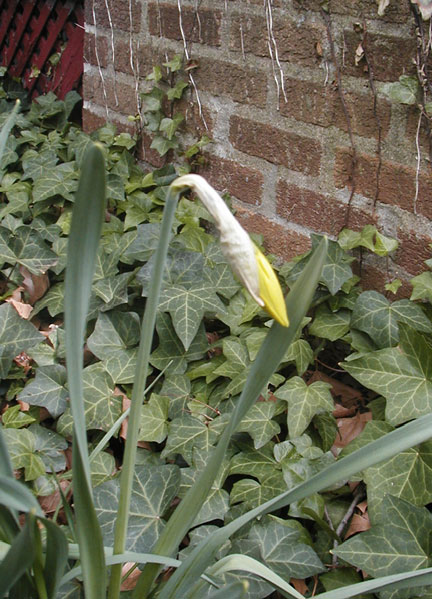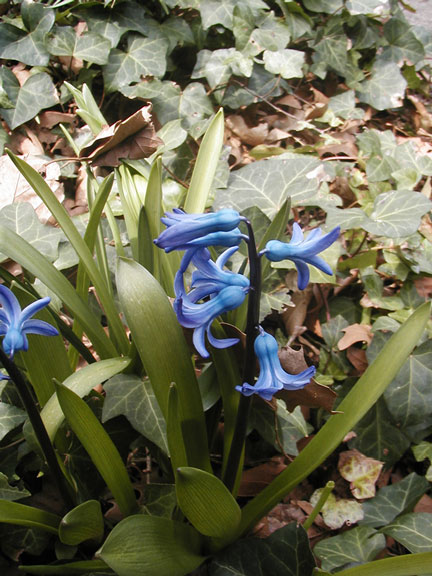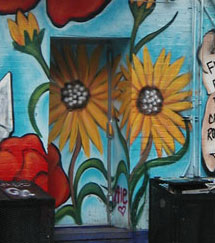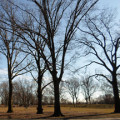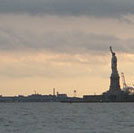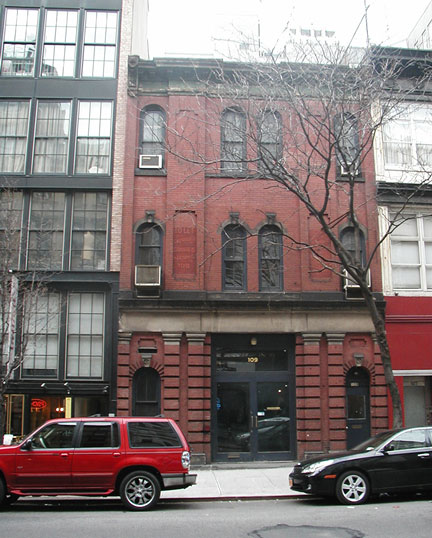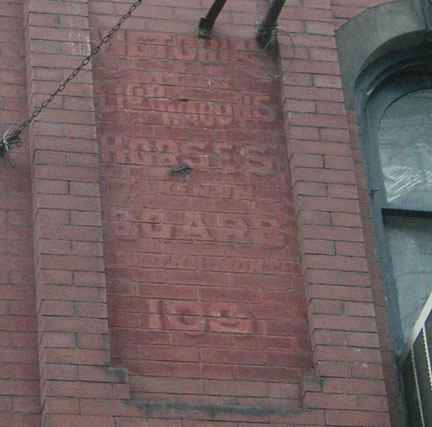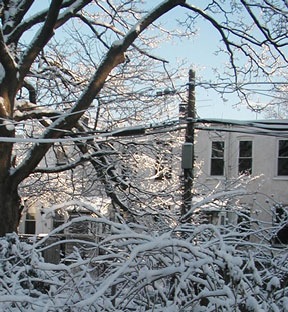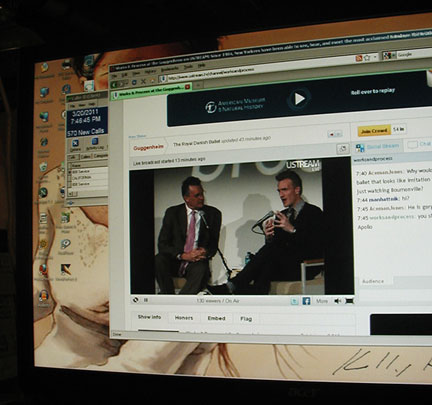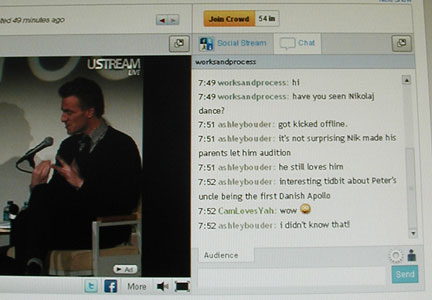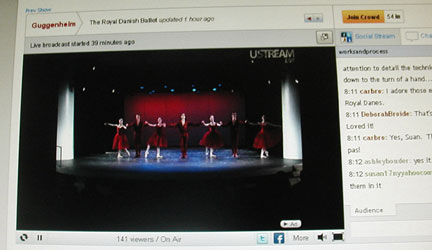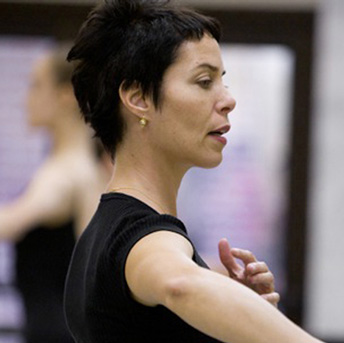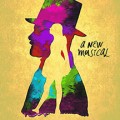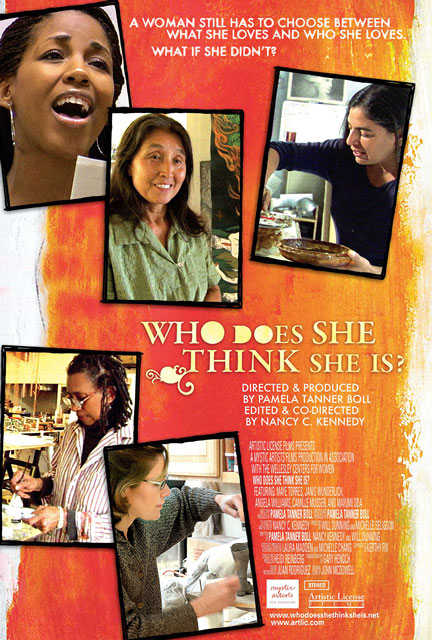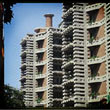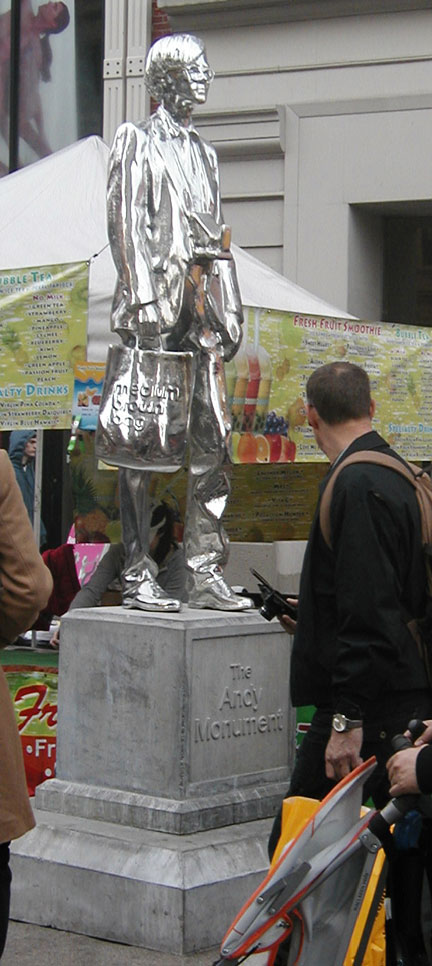
Merde – Short Film by Ballerina Meghan Samonte
I saw this bittersweet little film called Merde, by Meghan Samonte who used to dance for Ballet Manilla. So much said in so few words. Take a look.
2011 Native American Film + Video Festival
I spent last weekend at the 2011 Native American Film + Video Festival at the Smithsonian National Museum of the American Indian in NYC. I’d planned on seeing one film on Friday evening, but I wound up returning on Saturday and Sunday and viewing at least sixteen works. I am not a film buff and I’ve never before sat through so many films in the course of one weekend. But the subject matter of these films and the words spoken by the film makers and their subjects were so compelling. It was all so beautifully done that I didn’t want to leave. Beyond that, everyone at the museum was so welcoming and gracious. It was an absolutely wonderful experience from beginning to end.
The film I’d originally come to see was Shelley Niro’s Kissed by Lightning. It’s a beautiful story about Mohawk artist Mavis Dogblood, who is grieving for the husband she’s just lost. The film follows her as she prepares for a trip to New York City to deliver her paintings to a gallery. At the same time, she is on a journey to find a way to let go and to say good-bye.
Every little detail of this film touched my heart. The story delivers an emotional wallop with an understated touch. The characters are fully realized and played to perfection by an amazing cast led by Kateri Walker, Eric Schweig, Rachelle White Wind Arbez and Michael Greyeyes. They are the type of characters who drew me so deeply into the story that I didn’t want the film to end. It is set in deepest winter in the woodlands of Canada, not far from Toronto. The snowy landscape and the sleeping woodlands almost seemed as if they were characters in the story too.
Throughout the film, Mavis’ ancestors are also present, and the story of Hiawatha and the Great Peace Maker unfolds in words, haunting music and images of Shelley Niro’s magnificent paintings. There are also many laughs to share. My heart is overflowing as I remember all the images. In about a year’s time, the film will be out on DVD and I’m looking forward to seeing it again.
:: :: :: :: ::
The festival introduced me to unforgettable people, characters, lands and ideas that, without these films, I might never have known. I am so grateful to have had the opportunity to see them. The films were programmed into groups loosely based on their subjects and themes. At the end of each group, the film makers came forward for a Q&A.
Cry Rock by Banchi Hanuse documented the people, stories, history and culture of the Nuxalk of British Columbia’s Bella Coola Valley through live action and stunning watercolor animations. Throughout the film, there is talk about the drive to keep the nation’s stories and language alive. (I think that at one point it was said that there were only 15 people left who were fluent in the language.) One young man is seen sitting with two elders and cataloging the language with them.
All of this in and of itself would have made for a substantial film, but the film maker took things one step further.
The narrator is feeling the need to learn her grandmother’s stories. At the same time, she feels reluctance about asking her grandmother to tell her stories to the camera. She feels that the stories would somehow become compromised if they were recorded, rather than told directly and repeated the way they’d been for millennia before electronics became so widely available.
When this topic was being discussed during the Q&A, someone said something which absolutely gave me the chills. It was suggested that the stories themselves are living entities, each imbued with a spirit of its own, which is much more palpable when the story is told directly, from one person to the next. This is a concept that I’d never heard before, but the minute that the words were said it made such perfect sense to me.
It’s true that books, recordings and film have gone a long way toward replacing the act of oral storytelling. But at the same time, I am so grateful when I get the chance to experience stories from peoples of different cultures, stories that could never have come my way without the mediums of writing and recording.
I guess that a real balancing act will be required regarding the preservation of these stories going forward. For my people, the die was cast long ago and our Indigenous ways are just a blood memory. Still I could definitely empathize with the narrator’s reluctance to film her grandmother telling her stories.
Along these lines, one of the other film makers talked about the importance of cooking from scratch and working with one’s hands in the kitchen rather than getting their food from a box or a can, because the hands give energy and vitality and a life force and spirit to the food.
:: :: :: :: ::
In the short titled Jack, a Lakota man who served in Viet Nam is faced with the realization that his unit, the 7th Calvary, is the same one that carried out the massacre at Wounded Knee. I was really affected by the man’s candor and his story about how he managed to come to grips with this understanding. I was inspired by his decision to overcome the conflict that he felt. So much is said in the course of 4 short minutes. You can view the film on line here.
Sally Kewayosh said of her short film Cousins, that she’d grown up on John Hughes films, and wanted to create her own coming of age story with a Native cast. Cousins is a sweet light hearted film that captures the awkwardness of high school years without sparing the laughs. Contemporary setting. Terrific characters. Really good acting. Very entertaining.
I was deeply moved by Dustinn Craig’s A Snapshot in Time, which documents the life of his great grandfather, his relocation to Oklahoma and his return to the White Mountain Apache Reservation where he was born. Craig also had a hand in several other films in the festival.
Amalia Cordova contributed a short film which profiled Tiokasin Ghosthorse and First Voices, the WBAI radio program that is dear to my heart. First Voices has introduced me to so many discussions, thoughts and guests that I’d never have heard otherwise, so it was great to get a glimpse behind the scenes of the program.
The Migration, written by Cody Harjo, was another short film that really got to me. It demonstrated the very sad shape of America’s dying empire and what it could look like forty years from now if we continue along this course. Relocation endures because our society has so badly damaged the land and made it uninhabitable for humans. But even as matters worsen, it becomes evident that the only thing that will get humanity beyond this collision course is to keep faith with Indigenous ways.
In the Footsteps of Yellow Woman was created by Camille Manybeads Tso when she was in 8th grade. In black and white sequences shot in the beautiful Navajo landscape, along with historic still photos, she imagines the life of her great great great great grandmother, who suffered relocation and internment in the 1860s.
Raquel Chapa’s Open Season addressed violence against Native women, the desperation that they experience and the lack of options that are available to them as they try to escape. The film employed interviews woven together with arresting artistic images which are so powerful.
Siriono was set and filmed in Bolivia. It’s a fictional story that involves a case of mistaken identity and though the delivery is light hearted throughout, all the while it’s dealing with the heavy issues of the rights of an Indigenous nation to speak its language and maintain its culture, even as their people work to learn Spanish so that they can represent themselves amongst the larger nation.
I’m sorry that I don’t have the names of the men who represented Siriono at the Q&A, because they said such interesting things. They did not use a script for this film. They stressed the concept of the collective in all things involved in the film, including the directing. One of the men talked about Bolivia now representing itself as being “plurinational” (respecting the position of Indigenous peoples within the country) versus the tepid label “multi-cultural”.
The last film that I saw at the festival was Sande Zeig’s Apache 8, about a group of Apache women fire fighters. I was so inspired by the actions, the dedication, the discipline, the words and the stories of these women. Working as a firefighter is heroic enough, but these women each have such a strong work ethic and commitment that their outfit rose to the top of the profession. Throughout the summer, they are called to put out wildfires all up and down the west coast.
As each woman is profiled, we learn that their accomplishments do not begin and end with fire fighting. Most of them are mothers and several have been through heartrending hardship and loss. Some went on to second careers and have risen through the post graduate ranks in formal education. Several are in their 40s and 50s but maintain a very high level of fitness and focus.
It was just the most uplifting film. I love a film that can show the possibilities that most people never consider. I was so affected by having “met” the women in this film.
:: :: :: :: ::
At every Q&A session, no matter what the subject of the films, there was this urgency felt among those in the audience that these films have got to reach a larger audience. Native voices are few and far between in American mass media and popular culture. It’s a pity that so many predictable generic films dominate the theaters and television when there were so many films of such high quality screened at this festival that could have such wide appeal. They are deserving of a very large audience.
Big thanks to the NMAI for hosting this event so graciously.
Battery Park at Dusk
I took these photos on Friday night, before I went into the NMAI to see the Native American Film Festival. The day had been overcast but clear skies loomed on the horizon. I love the copper roofs on the buildings in the photo above, and the building behind the NMAI with its green windows really makes the verdigris copper pop. The cloudy skies and the wet streets made the image complete.
Almost every time that I visit the NMAI, I have to stop off at Battery Park and get close to the water in the bay. There was something magical about this evening. The air was damp and chilly.
I am finishing up an article about the festival. It really rocked my world.
Blue and Yellow
The Boys Are Back
“My bad.” Awww. I love that Number 33!
Good times in the office this afternoon.
Maybe winter really will come to an end.
Cool Things – 11.03.25
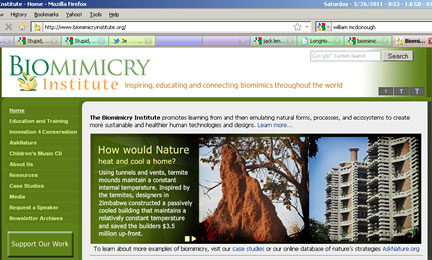
The Biomimicry Institute promotes learning from and then emulating natural forms, processes, and ecosystems to create more sustainable and healthier human technologies and designs. I heard its founder, Janine Benyus interviewed on Free Forum a few months back, and ever since I heard her speak, I have been focused on this concept, especially because it aligns so well with Indigenous thinking and behavior. It has inspired me to ask questions about the way I conduct my own business from a completely different perspective. (Our question of the moment is, “How would Nature protect fragile things from getting wet or damaged while in transport?” When I have the answer, I hope to have found a replacement for the shrink wrap that we use.) I am so excited by her work and the entire concept of the Biomimicry Institute.
You can see one of Janine Benyus’ TED Talks here.
:: :: :: :: ::
The image above is a screen capture from Inhabitat. It comes from a 2008 article written by Mahesh Basantani.
William McDonough’s proposal for a Tower of Tomorrow gives a compelling example of how Biomimicry operates. Working like a tree, this building “makes oxygen, distills water, produces energy, and changes with the seasons”.
The building’s curved shape reduces the impact of wind and the amount of materials needed for construction. The building contains a three story garden (and I’d imagine that fruits and vegetables can grow in these conditions) and a green roof.
Wastewater from sinks can be used to feed the building’s gardens. The wastewater from the gardens can be used in toilets. The southern facade is covered with solar panels, which can provide up to 40% of the buildings usage. Best of all, all the building materials can be recycled or “returned safely to the earth in true Cradle-to-Cradle fashion”.
How exciting is this? In future entries, I hope to share a little bit more about similar projects, several of which have been built. –
William McDonough’s Treescraper Tower of Tomorrow | Inhabitat – Green Design Will Save the World
Faded Signs
I have always liked these little carriage houses which still remain as part of the cityscape in New York City. They were built to house horses and carriages, but most of them are now converted to other uses. This one, located in Chelsea, caught my eye because you can still see the faded hand painted advertisements located between the second story windows.
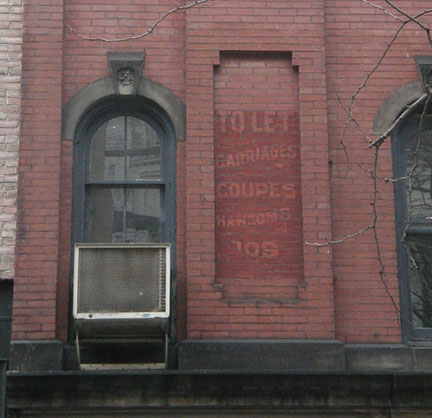
The sign on the left: To Let – Carriages – Coupes – Hansoms
The bottom line says “109” which is the building’s address
The sign to the right: Victoria’s Light Wagons – Horses Taken In – Board By The Month
Royal Danish Ballet – Works & Process at the Guggenheim
Nikolaj Hübbe and the Royal Danish Ballet
Live Web Stream
Sunday, March 20, 2011
This is my second experience with watching a simulcast provided by the Guggenheim’s Works & Process Series. Not only is the series a wonderful concept, in which an Artistic Director can offer insight into dances moments before they are presented on stage. But having the opportunity to watch the presentation on a video stream while reading the scrolling chat in an adjacent window on my computer screen, and being in the “virtual” company of knowledgeable fans and one of my favorite ballerinas — Ashley Bouder — throughout the evening is the icing on the cake.
In this edition of Works & Process, John Meehan, Professor of Dance at Vassar College, interviewed Nikolaj Hübbe, Artistic Director of the Royal Danish Ballet and former principal dancer of New York City Ballet. RDB presented a program which combined the new — an excerpt from a work by Jorma Elo – with the old, a ballet called Napoli, choreographed in 1842 by August Bournonville. From the 1830s through the 1870’s, Bournonville choreographed over 50 ballets for RDB, creating a unique style that became the company’s signature.
The evening opened with Hübbe speaking about the way that Bournonville structured class. After his death, his students codified his teachings with steps or combinations titled for the days of the week. The first dance of the evening, an excerpt from Bournonville Variations, paid homage to his system. Five men dressed in gray, some wearing jackets which made reference to characters from classic ballets, performed an assortment of these combinations. Most of what we saw was petite and middle allegro work, sometimes performed with unusual port de bras, including one sequence where the men danced with their arms folded across their chests. The sequences moved along lines or on the diagonal, as they would in class. As a ballet student, all I could think of was how challenging all that footwork must have been. It seemed as if it never let up. The men performed it so beautifully, and their footwork was so quick and clean.
During the break, Meehan interviewed Hübbe about his training. Hübbe had it in his mind at an early age that he wanted to be a ballet dancer. His parents originally discouraged him, placing a higher value on his academic education. But by the age of 9 he’d managed to convince them to let him audition at the Royal Ballet School. He said that during his student years in Denmark, male ballet dancers were considered to be “men of craft”, on par with intellectuals and artists, and that there was no stigma involved in being a dancer.
Before I heard this interview, I never realized that Balanchine had served as Artistic Director of the RDB right after he left the Ballet Russes. He set Apollo on the RDB, and Peter Martins’ uncle became the first Danish Apollo.
The first piece in the next dance section was an excerpt from Jorma Elo’s Lost on Slow. Then came Bournonville’s Jockey Dance, a tip of the hat to the English love of horse racing. Hübbe described the theme of this ballet as being, “Anything you can do, I can do better.” I was taken by the fleet footedness of the dancers, veteran Thomas Lund and newcomer Alban Lendorf. Ashley Bouder said that one would rarely see footwork like this anywhere else. Even the hips become involved, as the dancers turn in and out at breakneck speed, each one trying to outdo the other. This piece was followed by an excerpt from Bournonville’s A Folktale. The costumes used in all the dances throughout the evening were absolutely beautiful, but the crimson red dresses worn by the ballerinas in A Folktale were just extraordinary.
The interview continued with talk of the Royal Danish Ballet itself. The company is 250 years old, and was described as being “notoriously difficult to direct” because of some of the archaic rules involved. In America, private enterprise runs the dance world. But with the Danes, it is all subsidized by the state, and with this come rules that can not be violated. One of the rules requires that dancers have to retire at the age of 40, so freelancers have be hired to play roles like the parents in La Sylphide. The Artistic Director has to maintain the balance in keeping tradition alive while keeping current with the times.
Hübbe also said that, as a young dancer, he wanted to come to America and dance with New York City Ballet because he wanted the opportunity to “step out of the story” and to prove that he could “dance without a liberetto”. So it was amusing that when he came to NYCB, the first ballet in which he was cast was Donizetti Variations, which has a libretto.
The next dance was an excerpt from Bournonville’s La Sylphide. I wish that I could credit the ballerina who played this role, because she was so lovely. Her port des bras especially was so expressive. She really embodied the look and the movement of a fairy from the forest. I would love to see RDB’s full length ballet.
The evening closed with a celebratory tarantella from Act III of Napoli, full of exuberant dancing and lovely colorful costumes.
The Royal Danish Ballet is about to embark on an American tour which will bring them to the Koch Theater at Lincoln Center, among other places. They will not be able to perform the full length La Sylphide here in New York City because the theater doesn’t have a deep back stage area and can’t accommodate the sets. Ashley Bouder added that behind the stage of the Koch Theater, all that they have is a cross over. I had to wonder why Lincoln Kirstein and Philip Johnson would have chosen to have the theater designed this way.
For hours before the performance started, Ashley Bouder was tweeting her reports from the rehearsals. She mentioned that the dancers were concerned that the floor was very slippery. Hübbe, who had been nothing but charming and charismatic and completely natural throughout the entire evening, ended the performance by thanking the dancers and expressing his relief that no one had fallen during the show!
The program is archived here.
Cool Things – 11.03.18
Some cool things that have crossed my path recently:
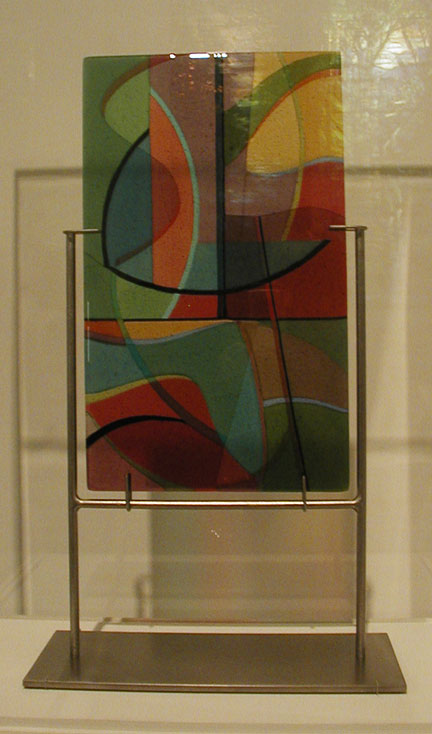
I saw this piece by artist and designer Dorothy Hafner at the Brooklyn Museum. (I apologize for the poor quality of the photo!) Take a look at the good photos of her work that appear on her website, and here and here.
:: :: :: :: ::
A terrific film is airing on PBS World this week called Who Does She Think She Is? It profiles five women artists who are also mothers and the choices that they had to make to stay in balance in both roles. It is such an inspiring film which drove me to tears at the end. I identified so strongly with these women and I could have listened to them speak all night long. I was especially touched by the stories and work of two of the visual artists in the film: Maye Torres and Mayumi Oda.
I was captivated by the words of drummer Layne Redmond who spoke of the legends of the goddesses who pre-dated Judaism. I had been exploring this on my own, wanting to know how my people lived before monotheism and the dogma of religion arrived. I had read what I could find about Astarte, a goddess of the earth who was revered in the Middle East, and Redmond mentioned her name, saying that she too had been a drummer and that there had been many goddesses depicted in “pre-historic” art as being strong women who carried a drum!
I also fell in love with the paintings of Edith Vonnegut, whose work I’d never seen before. Visit her web site and take a look around. She creates stunning paintings of beautiful women as super heroes within the family and as activists around the world. These aren’t the type of super heroes who wear capes. These women are full figured nudes and angels. Any mother could recognize them!
The film is directed by Pamela Tanner Boll and co-directed by Nancy C. Kennedy.
:: :: :: :: ::
Another film that I highly recommend is Garbage Warrior, which I recently saw on Sundance. The film is about Taos architect Michael Reynolds who builds beautiful houses called Earthships out of natural materials and discarded tires, plastic and glass bottles, and soda cans. The film chronicles his career, along with his fight for the right to experiment with design. It also takes us to the Andaman Islands of India, where in the course of two weeks, Reynolds and his crew build a dwelling (again out of natural materials and garbage) in a town destroyed by the 2004 tsunami. As he’s building it, he is teaching his methods to the other engineers, architects and builders from the town. He’s a very inspiring figure fighting a crucial battle that could well move us along toward a sustainable way of life.
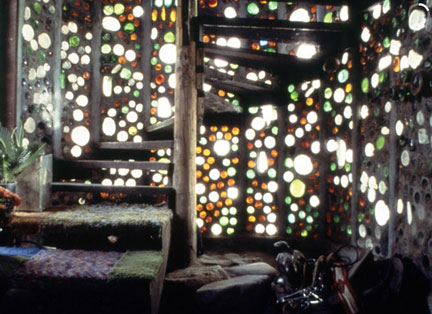
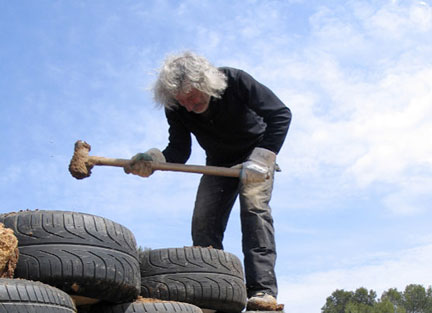
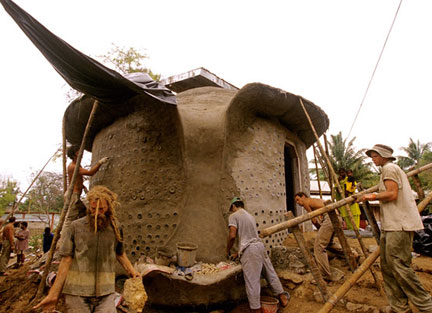
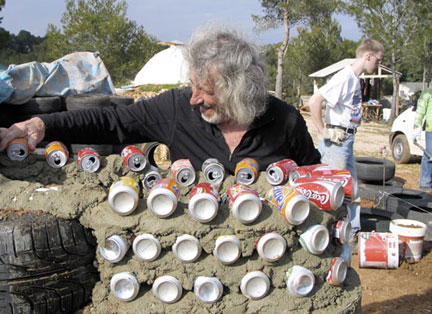
:: :: :: :: ::
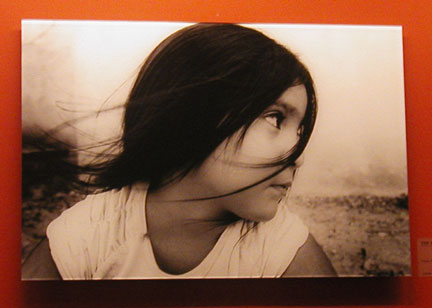
This photo stopped me in my tracks the first time I saw it. The look on this girl’s face really fired my imagination. I saw it as a mixture of innocence and knowing, and I absolutely loved the shape and the movement of the wisp of her hair which the wind is blowing across her cheek.
It is part of the exhibition titled GRAB which will be showing at the National Museum of the American Indian, George Gustav Heye Center in New York City through April 17th.
From the NMAI web site:
This exhibition presents photographs by Idris Rheubottom, Tony Craig, and Cybelle Codish, of the little-documented Grab Day. An annual tradition in the villages of the Laguna Pueblo [ . . . ] The photographers worked under the direction of filmmaker Billy Luther (Navajo/Hopi/Laguna Pueblo), whose current documentary Grab follows families preparing for this important tradition. Grab is an official selection of the 2011 Sundance Film Festival.



